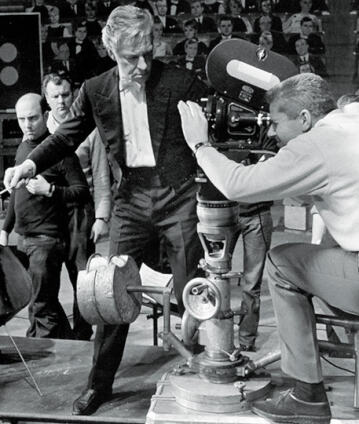Herbert von Karajan: Maestro for the screen

Herbert von Karajan was not only a brilliant musician, but also a visionary in terms of his use of media to distribute his art. He was the first major conductor to recognise the enormous potential of television for classical music. This film by Georg Wübbolt traces how, step by step, Karajan made the medium his own and developed his own audiovisual aesthetic.
This film traces how Karajan was a lifelong fan of technology and was also keen to learn about the latest developments in the field of television. His goal was to give as many people as possible access to his concerts. However, even more than the technology involved, he was particularly interested in the visual aspect – thus entering uncharted aesthetic territory. Up to that point, hardly anyone had considered how a concert could best be captured for the screen. Karajan made endless experiments, such as his collaboration with the French film maker Henri-Georges Clouzot, and finally as his own cinematographer.
The documentary, made in 1957 during a tour of Japan, shows the aesthetic ideals according to which Karajan staged the performance of classical music and especially his own function as a conductor. To illustrate this, we see diverse images from many decades of his career, and we meet many colleagues, some appreciative, some critical, who nevertheless all remember with fascination their work together with Karajan.
A film by Georg Wübbolt and Peter Gelb (2009)
Category
Artists
© 2008 BFMI / RBB/ BR / ARTE